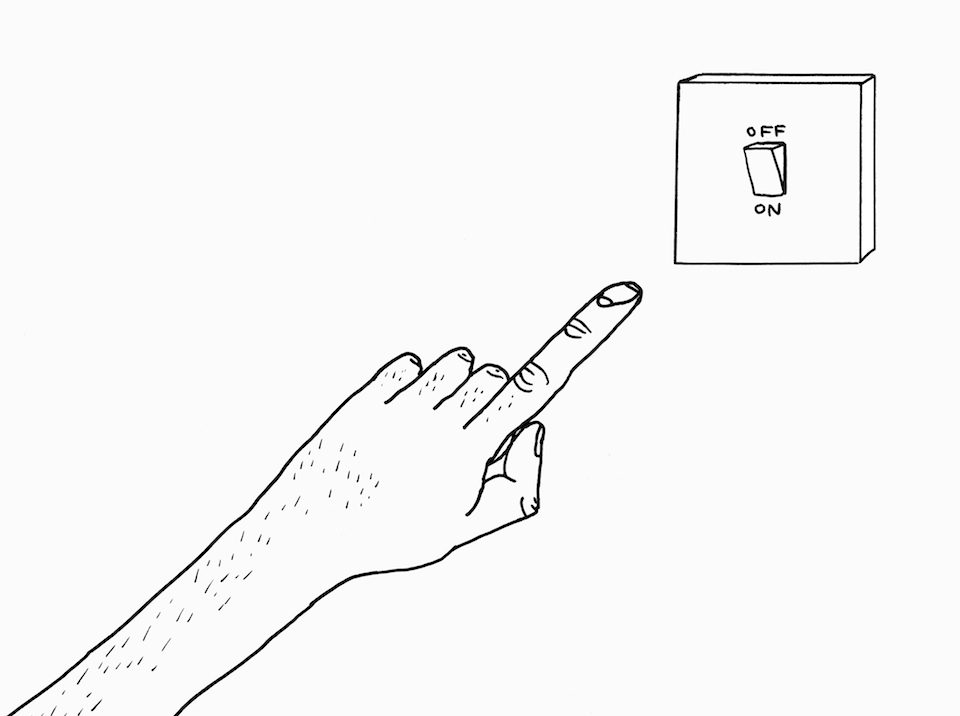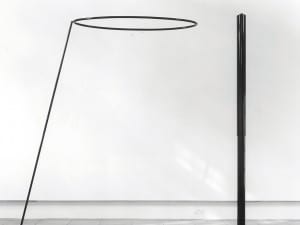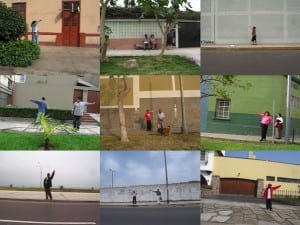David Shrigley, the man with all the ideas. His work excites, but outrages, provokes and evokes. David Shrigley is something of an enigma. His new show was on at the BALTIC in 2008.
David Shrigley is an artist whose work moves effortlessly between illustration, animation, sculpture, and even spoken word. He has collaborated with the likes of Blur, Deerhoof, David Byrne, Hot Chip and Franz Ferdinand. He has a weekly sketch in The Guardian’s Weekend Magazine, was commissioned by Channel 4 to create Who I Am And What I Want and even animated David McKenzie’s Hallam Foe. This man is everywhere. Shrigley is prolific to say the least.
His cartoon-like sketches are deliberately dysfunctional and deal with everyday doubts and fears of the human condition. Throughout the work a nonsensical and anarchic voice is ever present. With hand-written, unedited texts or assigned titles altering the perspective, the artistic results range from poignant to absurd. His work often asks questions about the nature of contemporary art and its audience. He parodies the excess of the culture market and his rapidly executed and sometimes crudely made sculptures suggest a desire to exploit and question its logic.
It is the truth in his subtlety, his wit and dark humour that are most appealing. He breaks down concepts to their simplest form and in doing this, elaborates their meanings and narratives. For Shrigley, it’s about the idea and not just settling for one definition, but looking at the range of possibilities. He is an artist who thrives on experimentation. He says, “I think there is a place for everything. I could probably just do drawing and that might be enough. The thing about drawings is that they don’t need to be presented in a gallery space. To a large extent, conceptual artworks are incredibly reduced deconstructed statements and images. My current exhibition to an extent is conceptual artwork. It is art about ideas rather than about formal concerns. You have to make objects develop space as well.”
Shrigley has had an international career spanning two decades and is currently participating in Life On Mars, 55th Carnegie International, Pittsburgh, USA. His work was included in To The Wall, Aspen Art Museum, Aspen, Colorado and Cult Fiction, Hayward Gallery touring exhibition, travelling to various venues within the UK (2007/2008). Forthcoming solo presentations will be held at Centre d’Art Santa Monica, Barcelona and Spain (2008). He was born in 1968 in Macclesfield and moved to Glasgow in 1988 to attend Glasgow School of Art, where he still lives and works today.
His latest exhibition is now on at BALTIC Centre for Contemporary Art, within the enclosed Ground Floor Gallery, the visitor will first discover a collection of sculptures. Moving to the rear of the space (located within projection cubicles) are two new black and white animated films Sleep (2008) and Lightswitch (2007). In sculpture, Shrigley plays with the form creating curious and eccentric propositions by transforming everyday objects or playing with scale.
Upon entering the space through Do Not Linger At The Gate (2008), the first piece of work is rather surprising — Dead Rat (2008), it is what it is. Shrigley says: “The death of a rat is seen as a good thing, whereas the death of other creatures elicits more sympathy. It’s a proposition in a way; I think all work should exist in some way as a proposition or a re-evaluation of something. It’s quite childish in a way, like putting a dog turd in a gallery. It’s slightly more provocative than overtly provocative like some of the other things that I make, the question is, how are you supposed to read them? I guess this show has ended up being about death.”
His humour is always present behind the soft-spoken voice and slightly aloof demeanour. “I made the piece (Dead Rat) a few months ago and it was shown at the Art Basel. My gallery in Copenhagen were preparing the exhibition for Basel and the cleaner threw it away, and she didn’t say anything, because she thought it was better that they didn’t know that a rat died on the gallerist’s desk, but of course, it was my work. That was pretty comic.” Shrigley has learned from this, and has a few back-up rats for the show at BALTIC.
The exhibition includes new sculptural works that continue to ask the visitor probing questions, such as Cheers, a pair of grey fishing waders and Wellington boots filled with expanding foam. Other recent works have included stuffed animals and doors, as well as tents and sleeping bags filled with foam that grows uncontrollably, allowing the artist little influence over the final form. “I made this piece last year in Sweden, I spent three weeks in the exhibition space, and I took some expanding foam with me, and I filled up things that I found. These waders were first used for a Peter Greenaway exhibition. There is a lot of failure in filling things up with foam, you have to be prepared that it won’t work sometimes or look aesthetically unsatisfying. It’s great to make a sculpture by filling stuff up.”
Death and destruction also features strongly in Shrigley’s work, and presented for the first time at BALTIC is Gravestone, a macabre life-sized stone engraving with a shopping list on it. In the Shrigley way, he is calling into question the meaning of an epitaph, the meaning of life and the nature of lists. He comments, “I was looking at gravestones and I was thinking what could be written on a gravestone. I’ve always been interested in lists. I am interested how one thing can be synthesized into another and all information can be jumbled, put in the wrong place and suddenly it starts to mean something, but it’s just two things that are in the wrong place. What does that mean? Is it a statement on the nature of what epitaphs can be, how arbitrary epitaphs are or how pointless epitaphs are or how important shopping lists are? I don’t know.”
Shrigley’s work is varied, there are a lot ambiguities and metaphors. As a viewer you have a lot of choices to make: take it at face value — a dead rat is a dead rat, or look more deeply into the nature of value systems and ideas. Shrigley says: “I’ve made objects all my life. I’ve never made a conscious decision that I’m going to do this or do that. My work has been a natural progression. The American conceptual artist, Jonathan Borofsky, always impressed me. I went to an exhibition of his and it looked like a group show with ten different artists. That always amazed me and I try to do the same with the exhibitions that I’ve done. I’m interested in a lot of different things at the same time. The criterion is to make something that you think is good and functions well, as an artwork. Success is within its own terms, however modest those terms might be. “
The exhibition continued at BALTIC Centre for Contemporary Art until 9 November 2008. www.davidshrigley.com.
Cherie Federico





